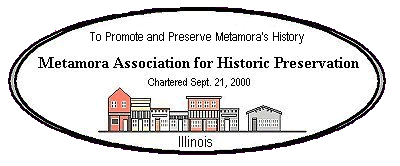Our Vision
Listed on the National Register of Historic Places in 1979 and the Central Illinois Landmark Foundation in 2001, our vision is for the Stevenson House to serve as a museum for Metamora memorabilia.
Museum exhibits will be changed periodically and serve to educate local students, tourists, and those passionate about our history.
One area of the museum is a library for researching Metamora and Woodford County history.
The Stevenson House will also be a great addition to the other two historic homes in Central Illinois that tell about the life of Adlai E. Stevenson I—the Matthew T. Scott Home in Chenoa, IL, and the Stevenson Family Home and Library in Bloomington, IL.
